Top Spots in Paris for Architecture Lovers
In Paris, whole neighborhoods are shaped by bold architectural choices. Walk a few blocks and you’ll move from sweeping Haussmann boulevards to Art Nouveau details or striking Art Deco landmarks.
For travelers who want to look beyond the postcard monuments, exploring these styles offers a deeper way to experience the city. Here are the key places where they come alive, along with details that make a visit worthwhile.
Art Nouveau Treasures
1. Guimard’s Métro Entrances
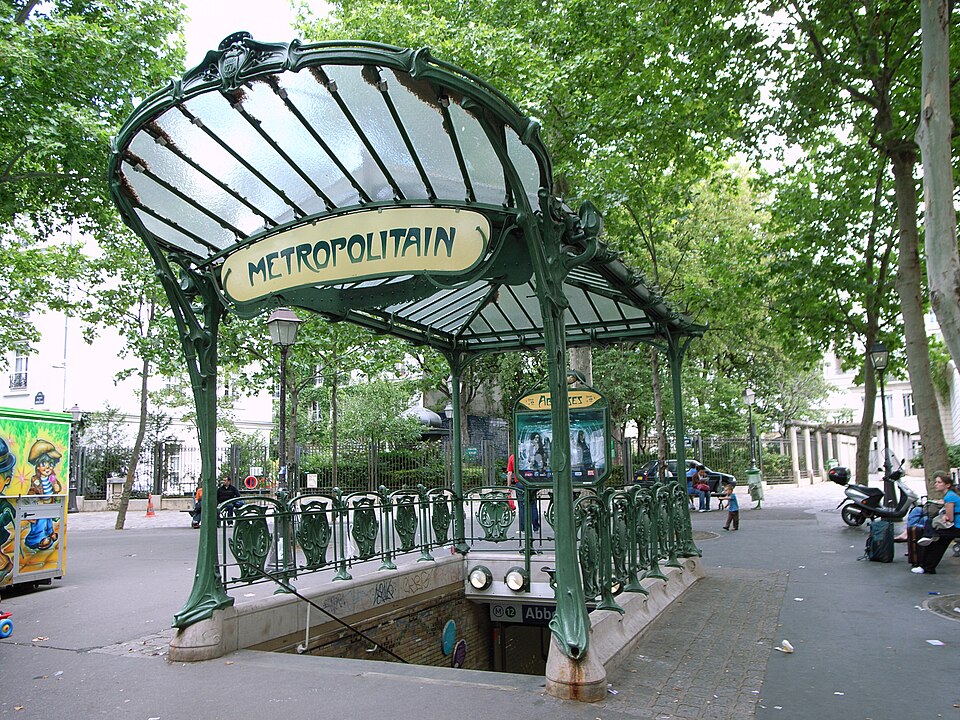
Hector Guimard’s Métro entrances are the most visible reminder of Art Nouveau in Paris. The style, with its flowing iron curves and plant-like forms, was meant to make everyday spaces beautiful.
Porte Dauphine still has one of the few original glass-and-iron canopies. Abbesses in Montmartre offers a rare covered entrance.
These are free to see and scattered across central neighborhoods, so keep an eye out while exploring.
2. Lavirotte’s Masterpiece
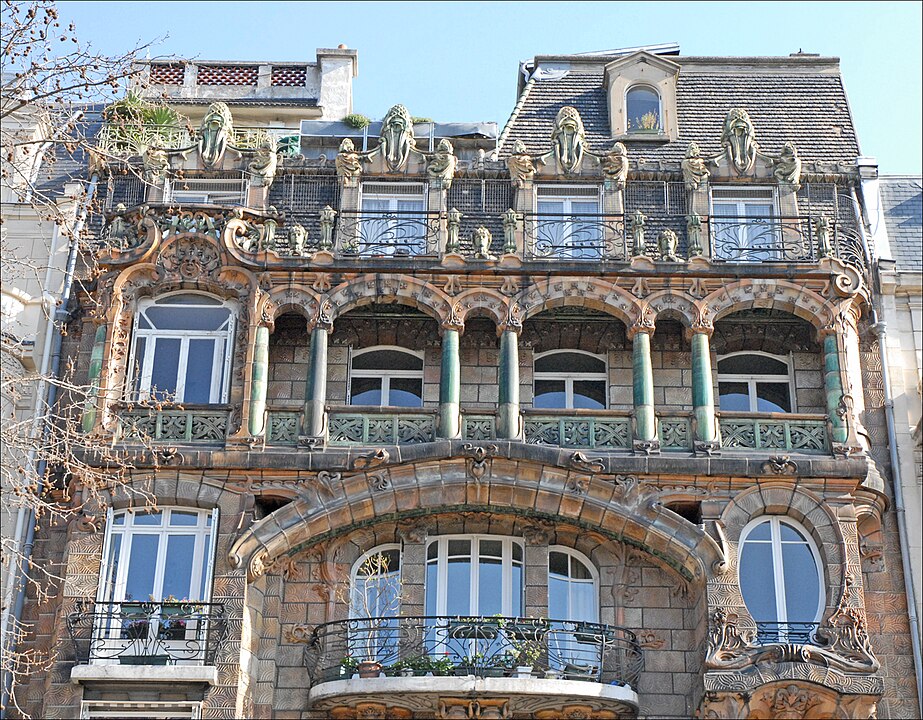
29 Avenue Rapp in the 7th arrondissement is a destination in itself. Designed by Jules Lavirotte in 1901, the façade is almost surreal.
Sculpted stone swirls around windows and balconies, ceramic panels cover parts of the walls, and the doorway is framed by strange, organic motifs.
Architecture students often stop here to sketch. It’s only a short walk from the Eiffel Tower, though crowds rarely spill into this quiet street.
3. Square Rapp
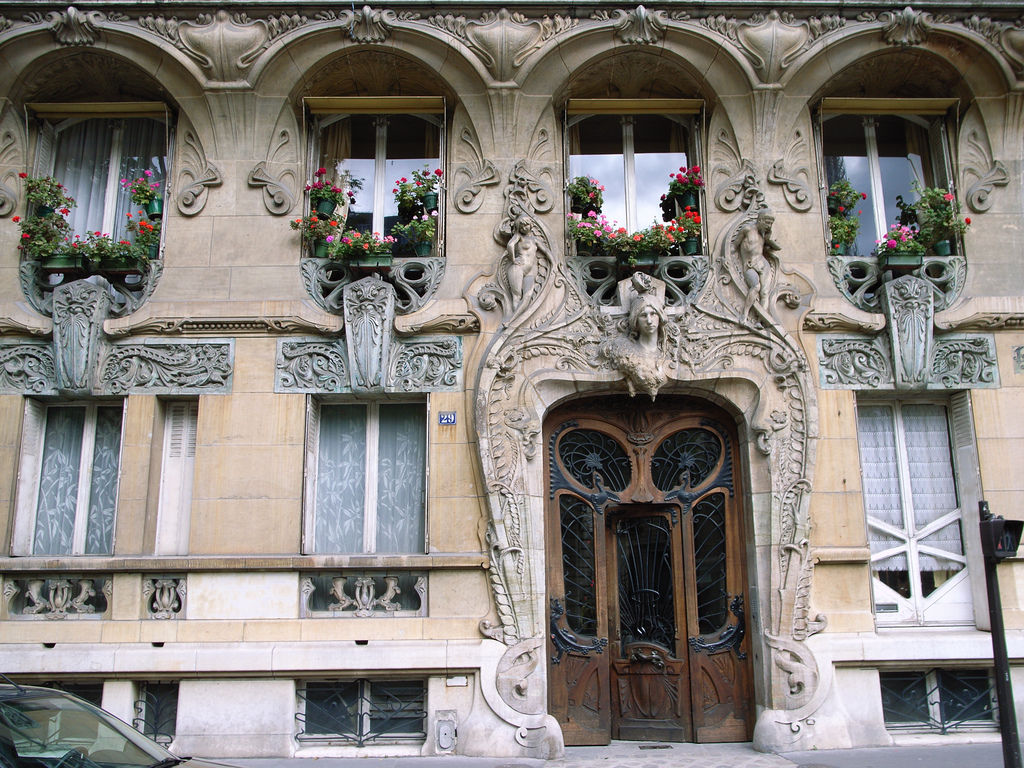
Nearby stands the Lavirotte Building at 3 Square Rapp, which offers another example of Art Nouveau’s extravagance.
The private square itself is small but worth a detour, with a clear view back toward the Eiffel Tower framed by ornate façades.
4. Hôtel Guimard
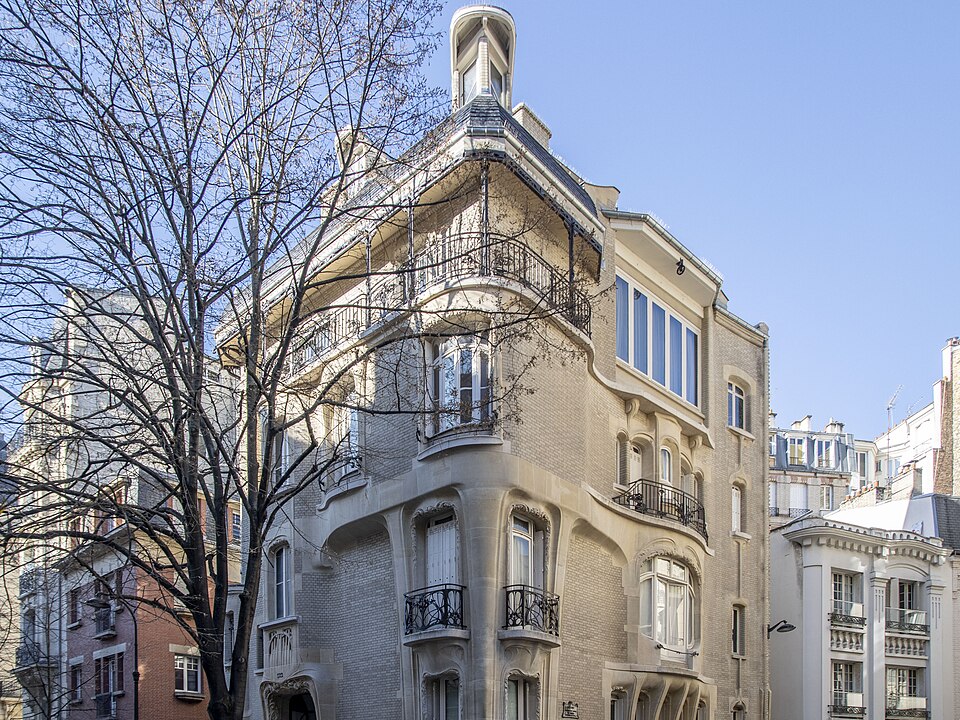
In the 16th arrondissement, Hôtel Guimard was the architect’s own residence. Its irregular shape and unusual proportions make it stand out among more traditional apartment buildings.
Visitors can’t go inside, but the exterior itself is worth the detour, with its irregular windows and flowing balconies.
5. La Samaritaine
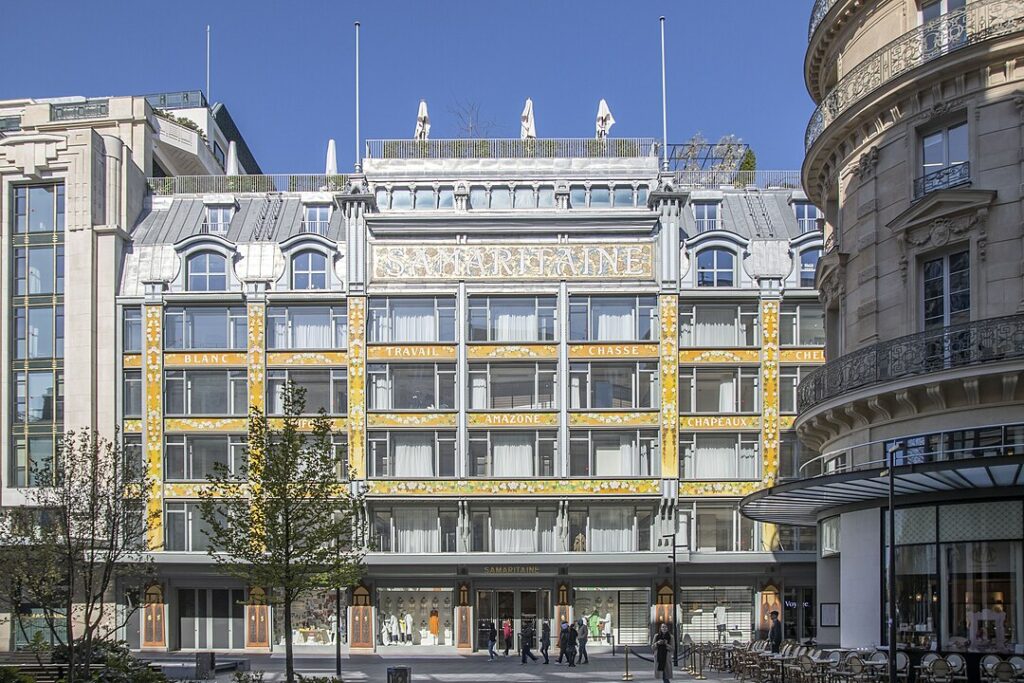
Art Nouveau also reached the department stores. La Samaritaine, reopened after a long closure, still has its original glasswork, mosaics, and staircases.
Though the shopping floors are modernized, the upper levels and restored details remain one of the best large-scale Art Nouveau interiors accessible to visitors.
Even if you’re not shopping, walking through or taking the escalators up offers striking views of the décor.
6. Musée des Arts Décoratifs
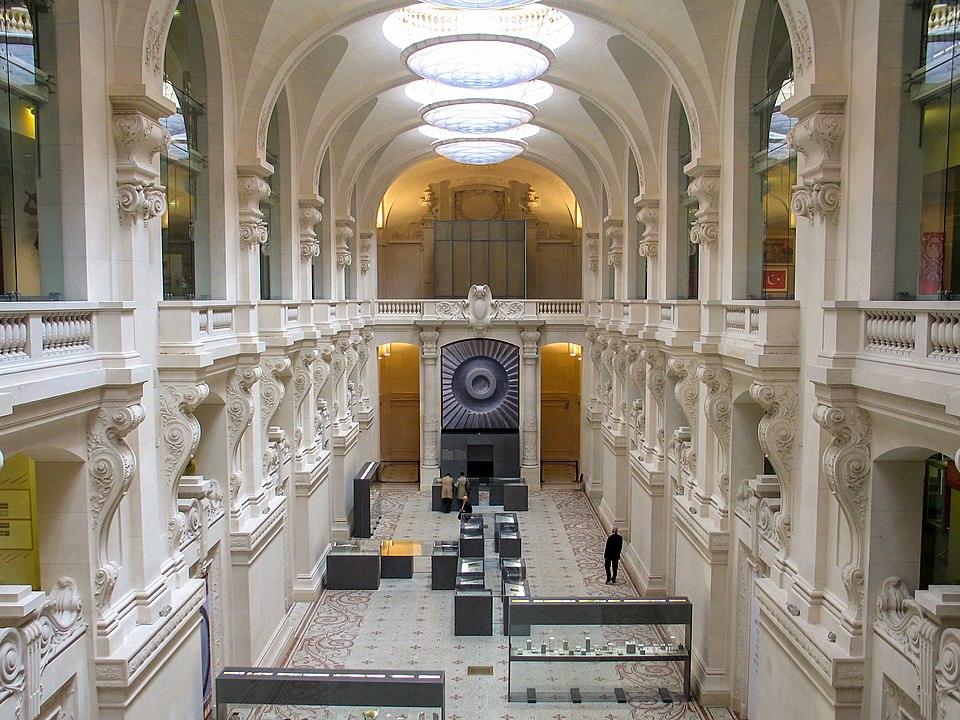
Inside the Louvre complex, the Musée des Arts Décoratifs holds one of the most important Art Nouveau collections in Paris.
Entire rooms are furnished with original furniture, glassware, and jewelry by artists such as Gallé, Majorelle, and Lalique.
It’s one of the few places where visitors can see complete interiors, not just isolated pieces.
7. Musée Maxim’s
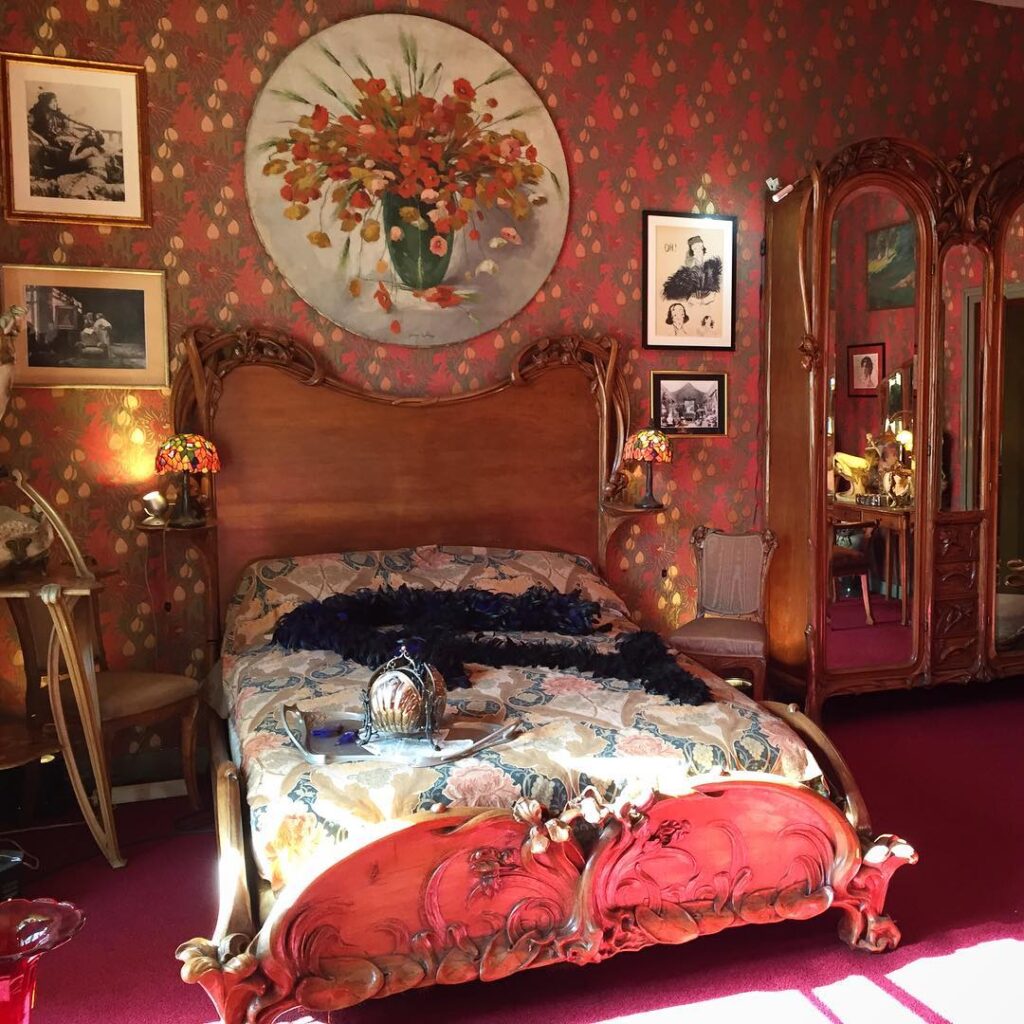
The famous restaurant Maxim’s also houses a private museum dedicated to Art Nouveau.
Visits are by guided tour only. Inside you’ll find a preserved 1900s dining room and collections of furniture, lamps, and decorative objects. It showcases how the style was used in high-society settings.
8. Printemps Haussmann Dome
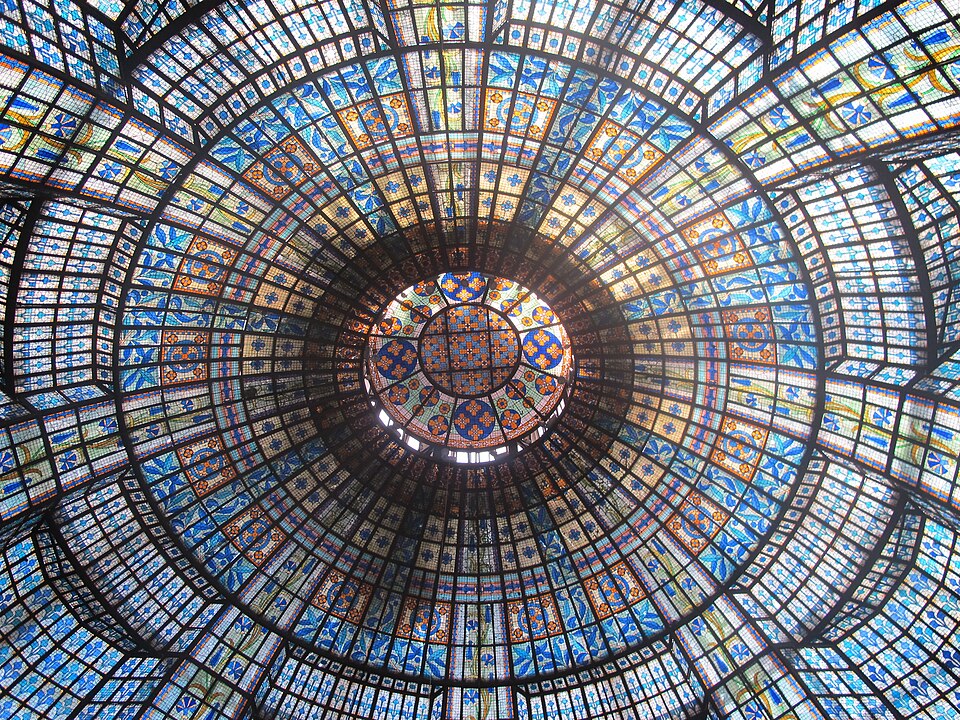
The department store Printemps on Boulevard Haussmann hides one of the city’s great Art Nouveau treasures: its glass dome. Restored to its original glory, the dome soars above the upper floors and can be admired from the restaurant beneath.
It’s free to enter, and combining shopping with architecture makes it a convenient stop.
Art Deco Landmarks
9. Théâtre des Champs-Élysées
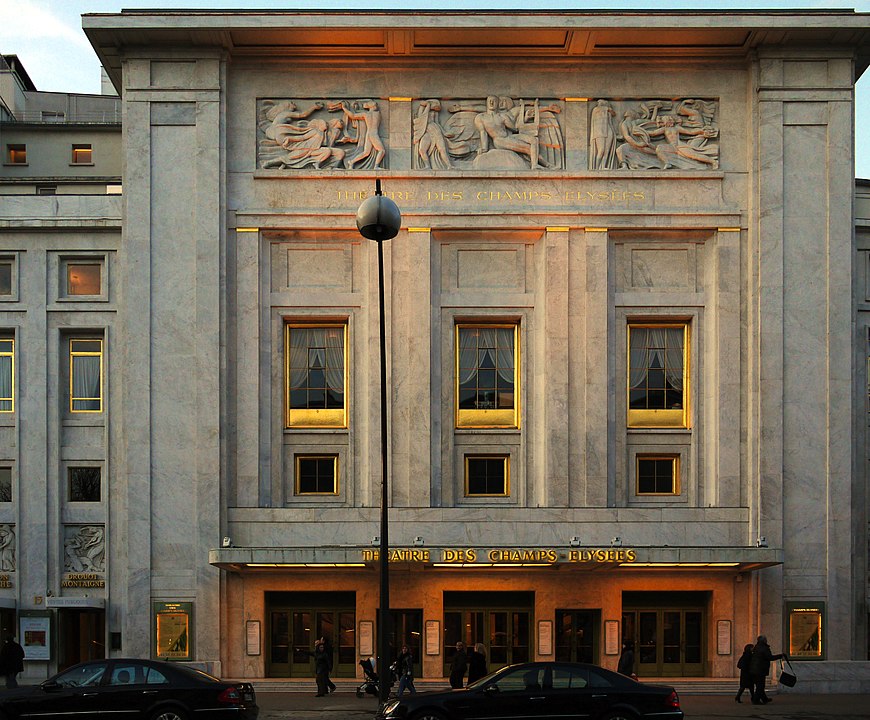
By the 1920s, Paris embraced a new aesthetic: geometric lines, symmetry, and bold forms. Théâtre des Champs-Élysées on Avenue Montaigne embodies this shift.
Built in 1913 by Auguste Perret, it rejected the elaborate decoration of earlier theaters. Its concrete structure, a novelty at the time, was paired with bas-reliefs and murals by artists like Antoine Bourdelle and Maurice Denis.
The theater is still active, and catching a concert or opera here offers the chance to experience the space as it was meant to be used.
10. Palais de la Porte Dorée
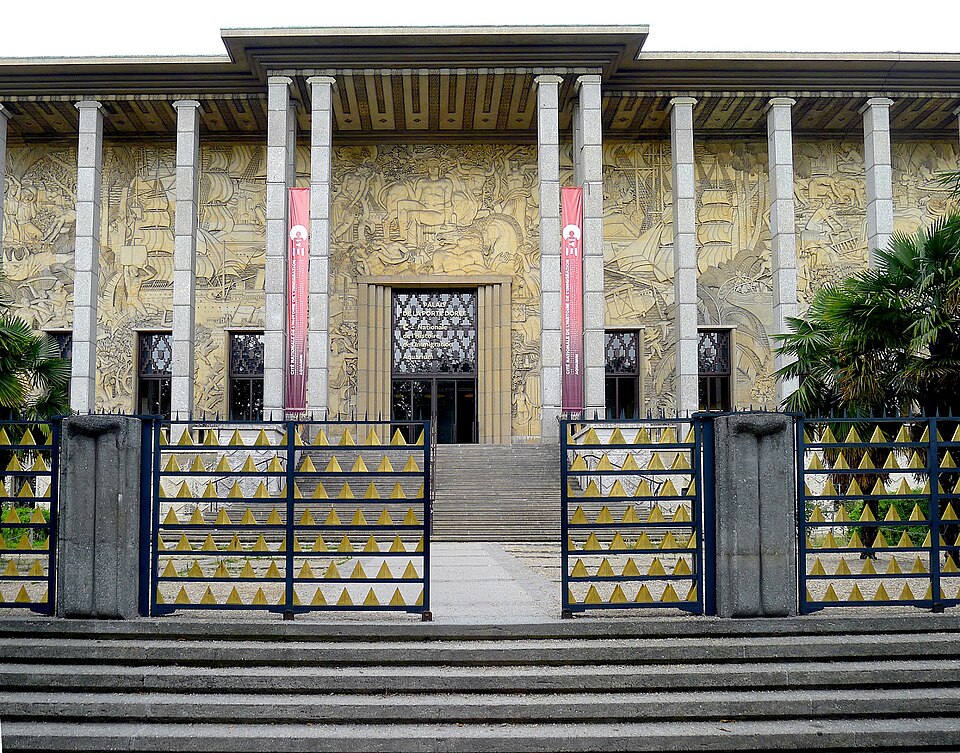
The Palais de la Porte Dorée in the 12th arrondissement was designed for the 1931 Colonial Exhibition.
Its exterior walls are covered in massive carved bas-reliefs of animals and plants by Alfred Janniot, making it one of the largest decorative friezes in Paris. Inside the museum, large murals cover the walls with scenes tied to the colonial exhibition of 1931.
Today the building serves a very different purpose, housing the Immigration Museum and a public aquarium.
11. Piscine Molitor
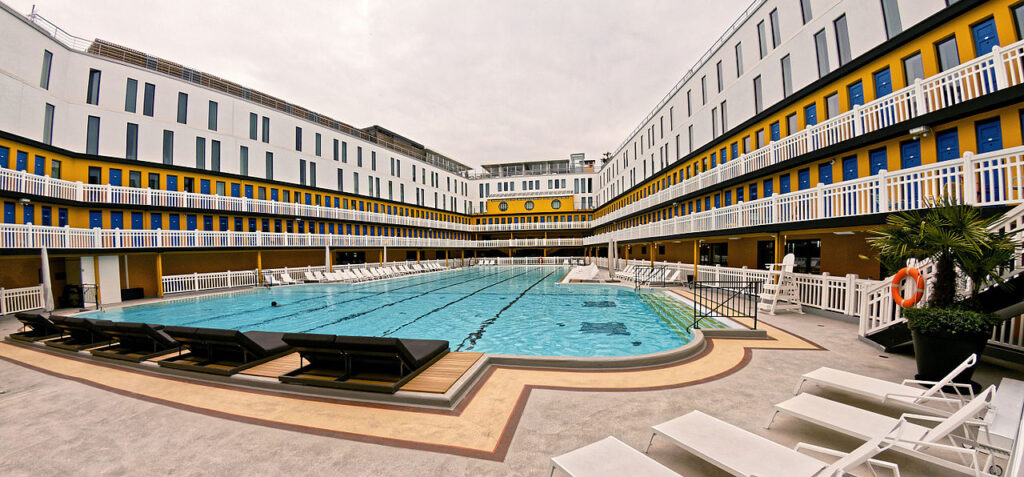
Not far away, the Piscine Molitor shows Art Deco in a lighter, playful form. Opened in 1929, the pool was famous for its blue and white cabins and geometric patterns.
It closed in the 1980s, fell into ruin, and was eventually restored as part of a luxury hotel. Day passes for swimming are expensive, but architecture fans can admire the design from the lobby or book a stay to see it in use.
12. Palais de Tokyo
Built for the 1937 Exposition Internationale, the Palais de Tokyo shows the monumental side of interwar architecture. Its vast concrete façades and clean, stripped-down lines reflect the late phase of Art Deco, when ornament gave way to scale and symmetry.
The building now houses one of Paris’s largest contemporary art centers, but the architecture itself is worth a visit for its imposing proportions and riverside setting.
13. Palais de Chaillot
Next to it, the Palais de Chaillot remains largely in its original form, home to museums and one of the city’s best open terraces overlooking the Eiffel Tower.
Art Deco Housing
Art Deco housing also survives across Paris. Boulevard Raspail and parts of the 14th arrondissement feature residential blocks with streamlined façades, curved balconies, and geometric railings.
These aren’t tourist sites in the usual sense, but a walk through these streets offers a glimpse of how the style shaped everyday life in the interwar years.
Haussmann’s Paris
14. Boulevard Haussmann
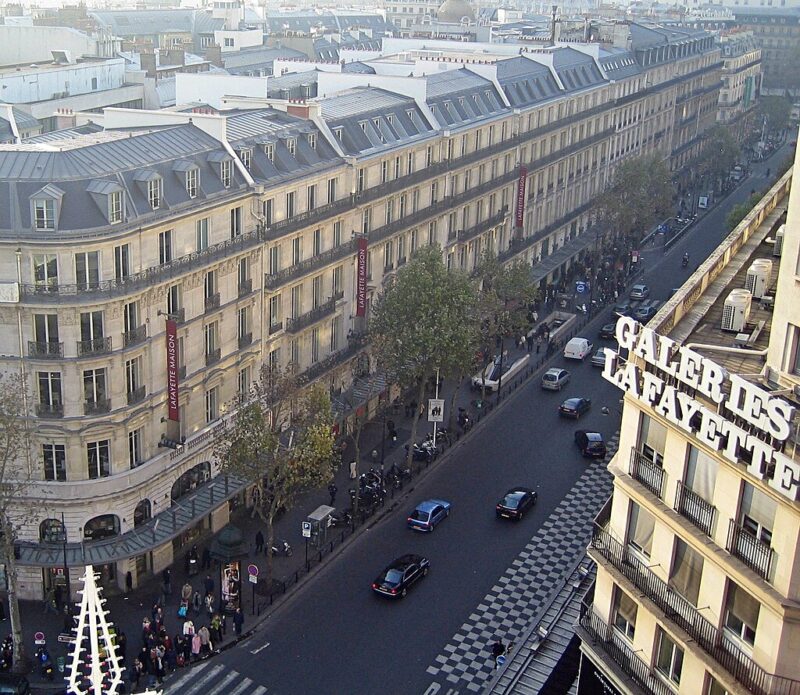
The Paris most visitors walk through was shaped in the mid-19th century under Baron Haussmann. His redesign of the city introduced wide boulevards, uniform stone façades, and monumental public buildings.
Boulevard Haussmann is the best-known showcase, with department stores like Galeries Lafayette and Printemps occupying Haussmann-era blocks.
The façades here demonstrate the style’s signature features: aligned windows, continuous balconies on the second and fifth floors, and mansard roofs above.
From the rooftop terrace of Galeries Lafayette, you can see the order of Haussmann’s design extending across the city.
15. Rue de Rivoli
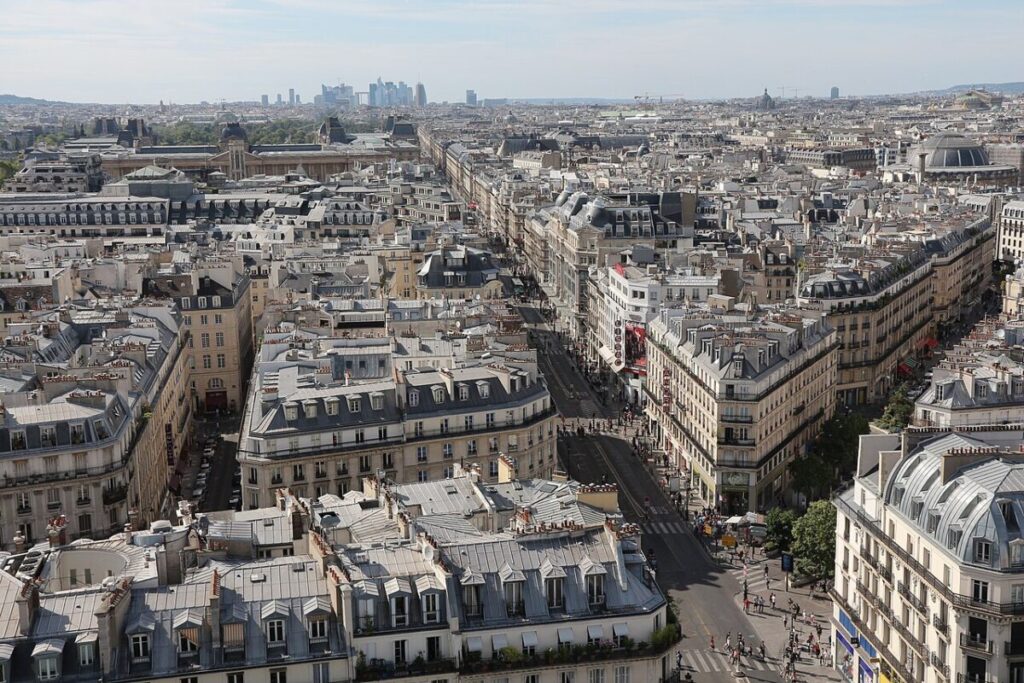
Rue de Rivoli stretches through the 1st and 4th arrondissements and shows the uniform arcades that were part of Haussmann’s plan to give Paris a cohesive look.
These arcades shelter cafés and shops today, making the architectural walk practical as well as aesthetic.
16. Boulevard Saint-Germain
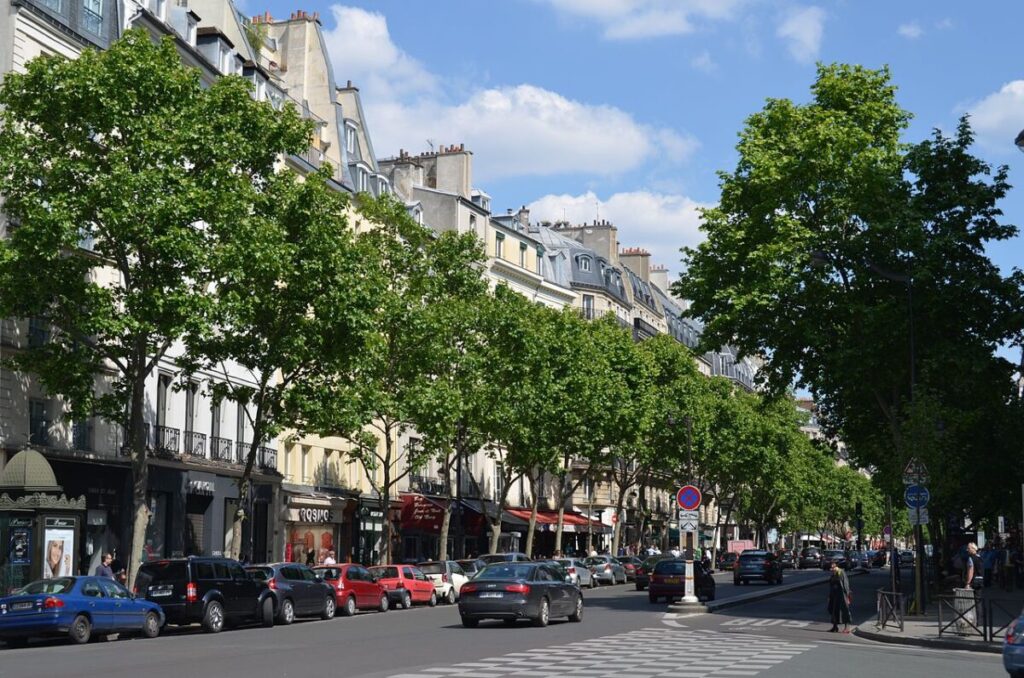
On the Left Bank, Boulevard Saint-Germain demonstrates how Haussmann’s wide avenues cut through medieval neighborhoods.
Lined with cafés, bookshops, and apartment buildings, it’s one of the clearest examples of the urban restructuring that changed Paris permanently.
17. Place de l’Étoile

The redesign also created new focal points. Place de l’Étoile, with the Arc de Triomphe at its center and twelve avenues radiating outward, epitomizes the monumental scale of the project.
Standing at street level, the view down each boulevard shows the controlled perspective Haussmann imposed on the city.
18. Opéra Garnier
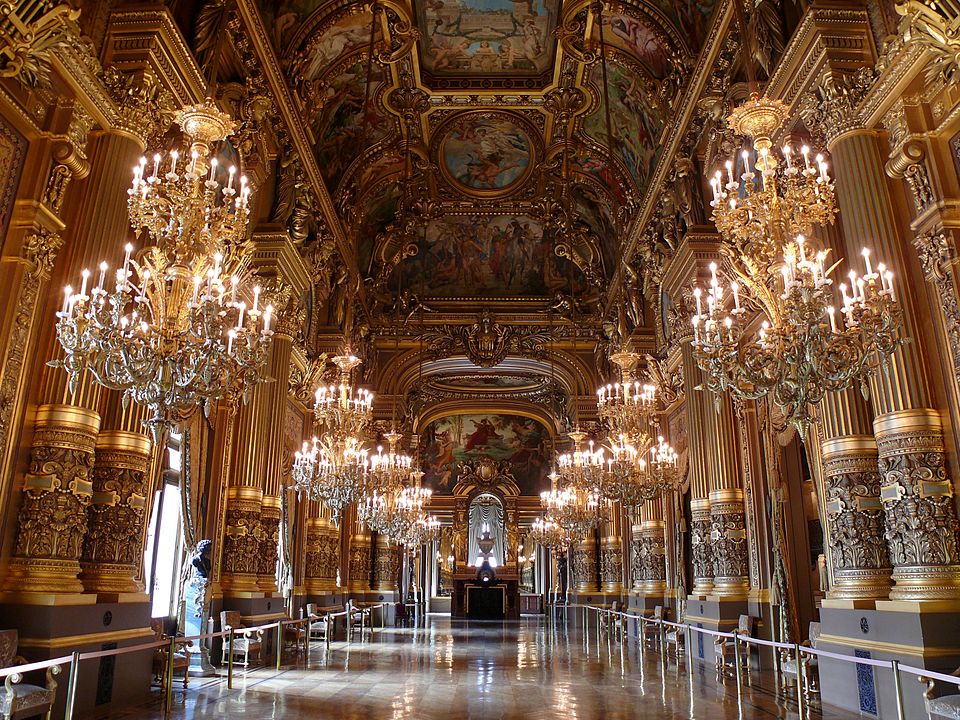
Completed in 1875, the Opéra Garnier was commissioned during the same wave of urban transformation. Its style, however, is firmly Beaux-Arts rather than Haussmannian.
Designed by Charles Garnier, the building combines classical columns, gilded sculpture, marble staircases, and one of the most opulent interiors in Europe.
Tours are available even when no performances are scheduled, allowing visitors to explore the foyers, chandeliers, and grand staircase that defined the Second Empire taste for spectacle.
19. Gare d’Orsay
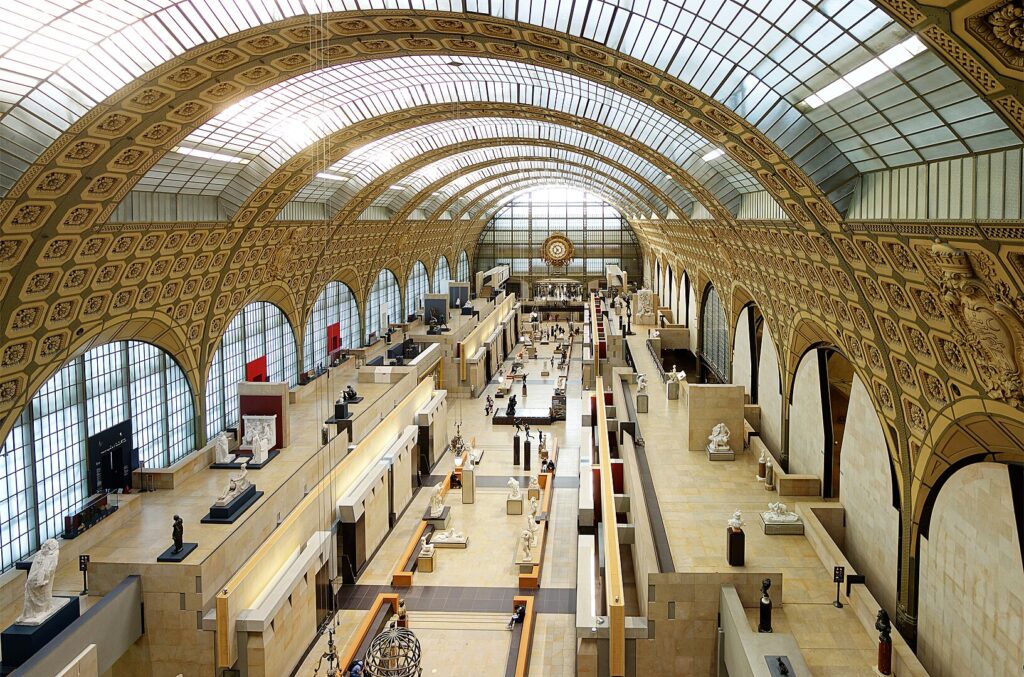
The Gare d’Orsay, now home to the Musée d’Orsay, was another product of the era. Built as a train station for visitors arriving for the 1900 World’s Fair, it was designed in a Beaux-Arts style that merged Haussmann’s urban vision with the grandeur of new technology.
The museum’s galleries preserve the iron and glass structure. It’s one of the rare chances to experience a 19th-century station repurposed for modern use.
